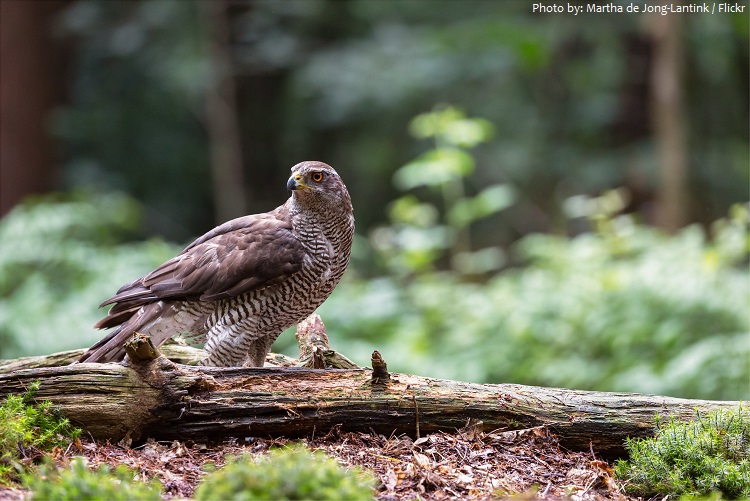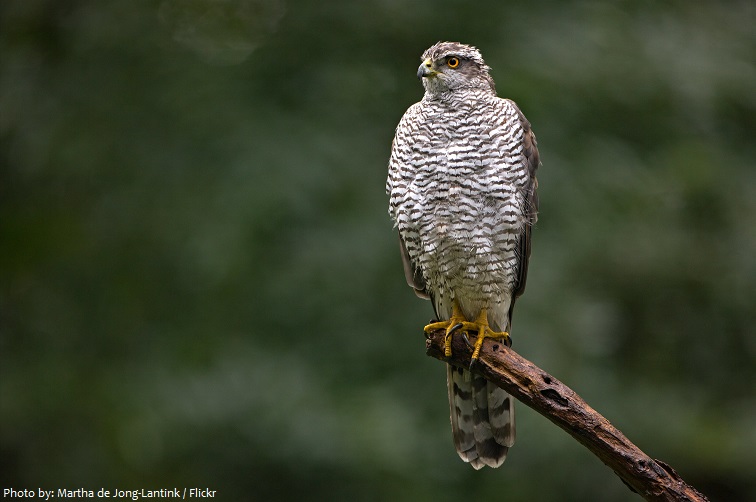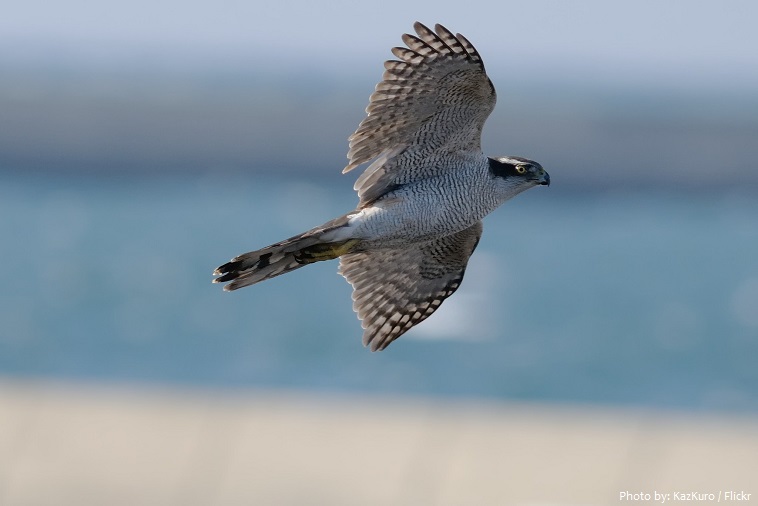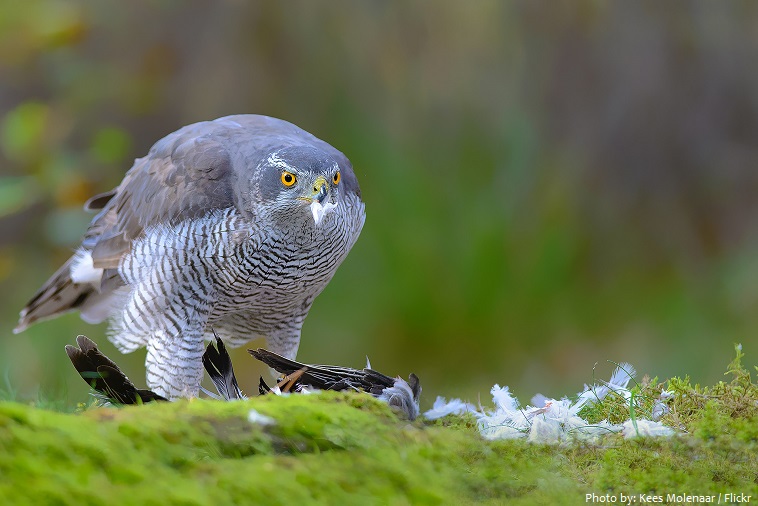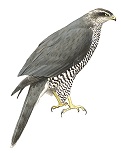The northern goshawk is a medium-large raptor in the family Accipitridae.
As a species in the genus Accipiter, the goshawk is often considered a “true hawk”. The scientific name is Latin; Accipiter is “hawk”, from accipere, “to grasp”, and gentilis is “noble” or “gentle” because in the Middle Ages only the nobility were permitted to fly goshawks for falconry.
This species was first described under its current scientific name by Linnaeus in his Systema naturae in 1758.
The name “goshawk” is a traditional name from Anglo-Saxon goshafoc, literally “goose hawk.”
There are 10 subspecies of northern goshawks.
Northern goshawks are found throughout the mountains and forests of North America and Eurasia. In North America, they are most broadly found in the western United States, including Alaska, and western Canada.
It may have the second widest distribution of any true hawks, behind arguably only the golden eagle, which has a broader range to the south of Asia than the goshawk.
Northern goshawks can be found in coniferous and deciduous forests. During their nesting period, they prefer mature forests consisting of a combination of old, tall trees with intermediate canopy coverage and small open areas within the forest for foraging. During the cold winter months they migrate to warmer areas, usually at lower elevations.
The lifespan of the northern goshawk is up to 11 years in the wild, and up to 27 years in captivity.
The northern goshawk is the largest hawk species. Male northern goshawks are 46 to 61 cm (18 to 24 in) long and have a 89 to 105 cm (35 to 41 in) wingspan; females are larger 58 to 69 cm (23 to 27 in) long with a 108 to 127 cm (43 to 50 in) wingspan.
Males average around 760 g (1.680 lb) in body mass while female average 1,150 g (2.54 lb) in body mass.
The colorings of adult male and female northern goshawks range from slate blue-gray to black. Their backs, wing coverts, and heads are usually dark, and their undersides are white with fine, gray, horizontal barring. Their tails are light gray with three or four dark bands.
The northern goshawk is capable of considerable, sustained, horizontal speed in pursuit of prey with speeds of 61 km/h (38 mph) reported.
Northern goshawks are carnivorous, mainly consuming birds, mammals, invertebrates, and reptiles of moderate to large size. Individual prey items can weigh up to half the weight of the goshawk.
Northern goshawks live alone or in pairs and are diurnal.
Goshawks, like other accipiters, depend upon vocalizations for communication in their forested habitats. They are especially vocal during courtship and nesting.
The birds are monogamous, and the pair bonds often long-term.
The nest, a platform made from thin sticks, lined with bark and greenery, is typically placed at a major crotch in a tree, 7.5 to 15 meters (25 to 50 feet) off the ground.
An egg is laid every 2 to 3 days and total clutch size is 2 to 4. The female usually begins incubation after the second egg is laid and incubation continues for about 28 days. Young are cared for by the female, while the male provides food. They begin flying at 35 to 42 days, and are completely independent by 70 days of age. Adult birds usually return to the same nest area and to the same mate in consecutive years.
There are few natural predators of goshawks. Great horned owls, hawks and eagles, martens, eagle owls, and wolves, have been known to prey upon goshawks, particularly nestlings, during times of low food availability.
The northern goshawk appears on the flag of the Azores. The archipelago of the Azores, Portugal, takes its name from the Portuguese language word for goshawk, (açor), because the explorers who discovered the archipelago thought the birds of prey they saw there were goshawks
Northern goshawks are related to eagles, buzzards and harriers.

